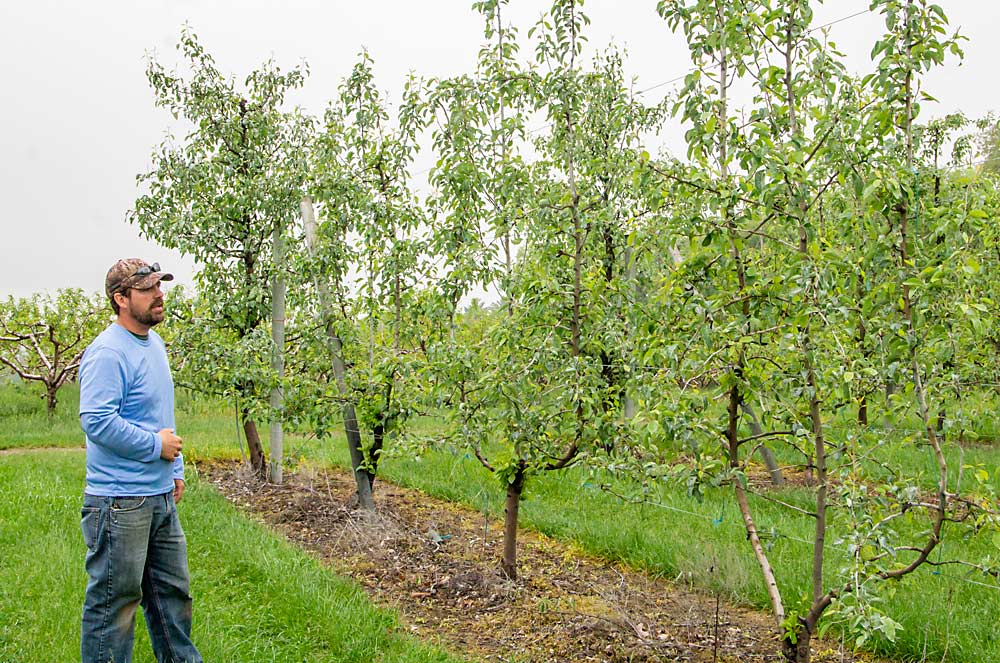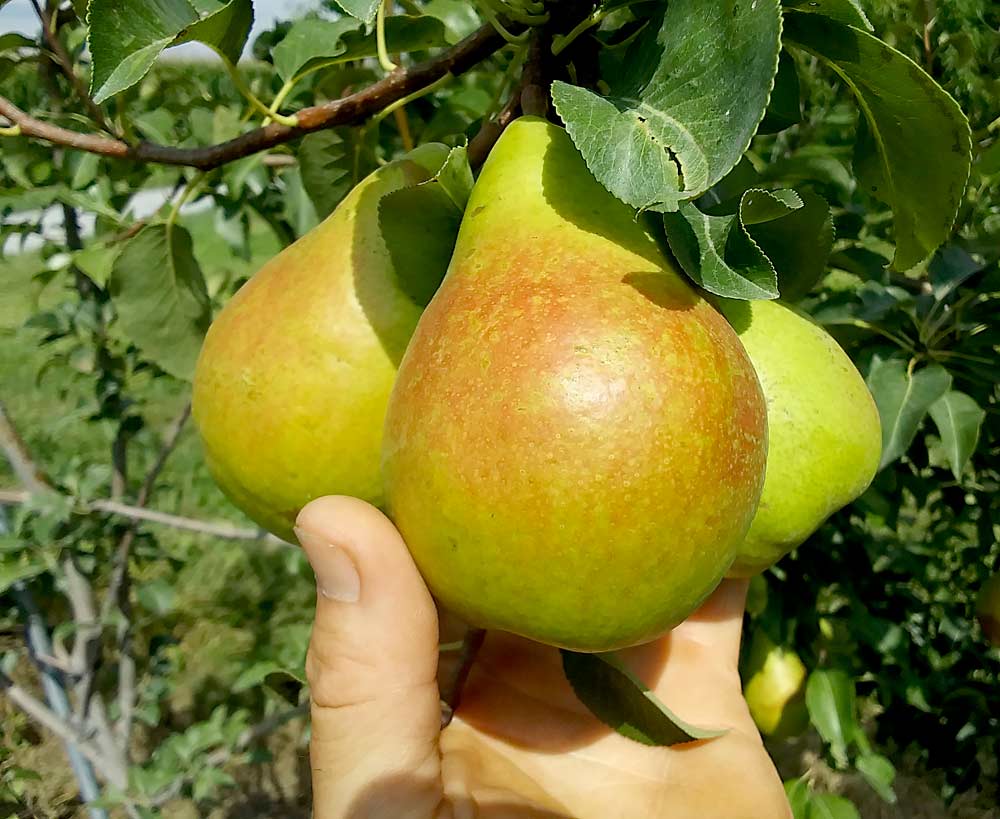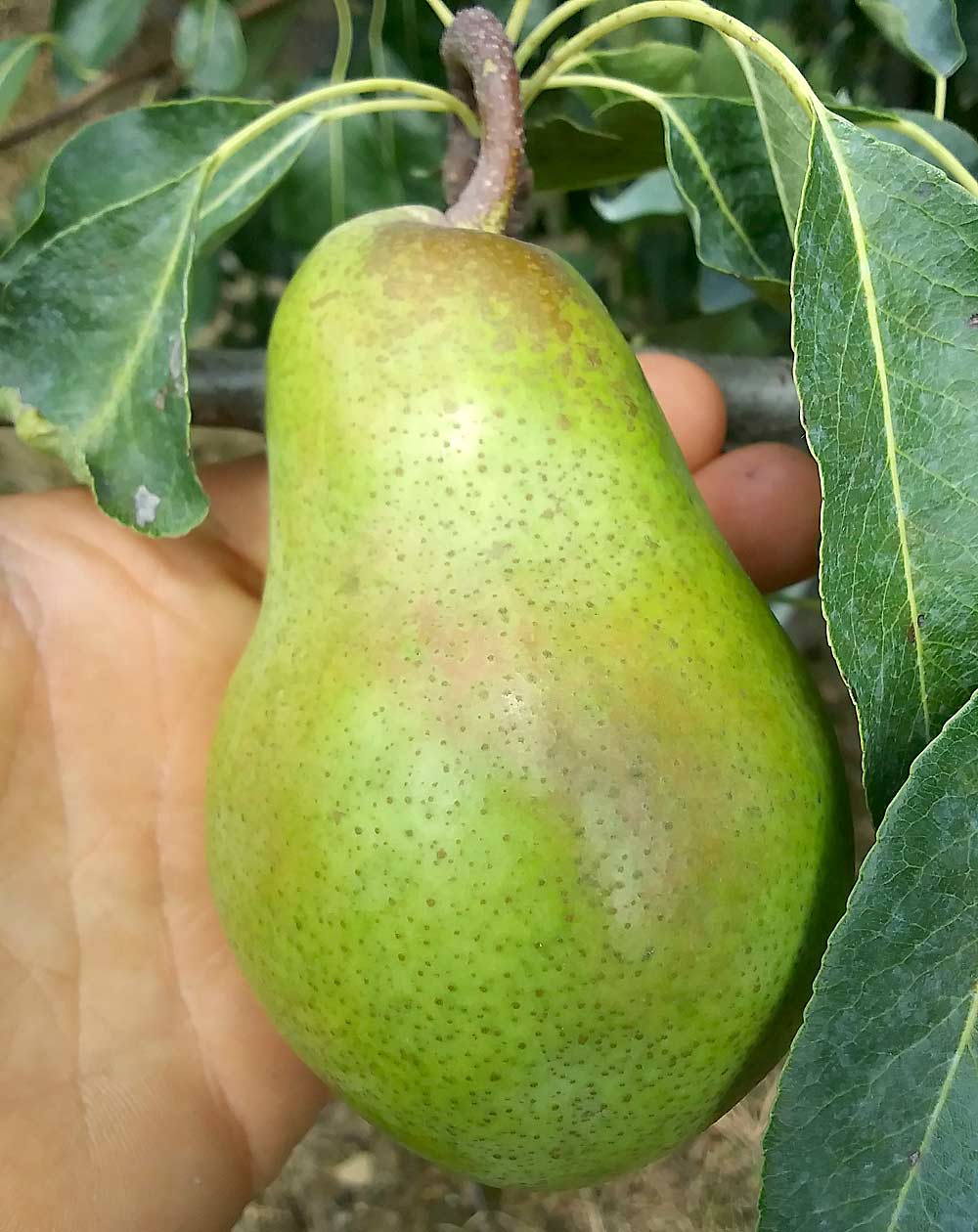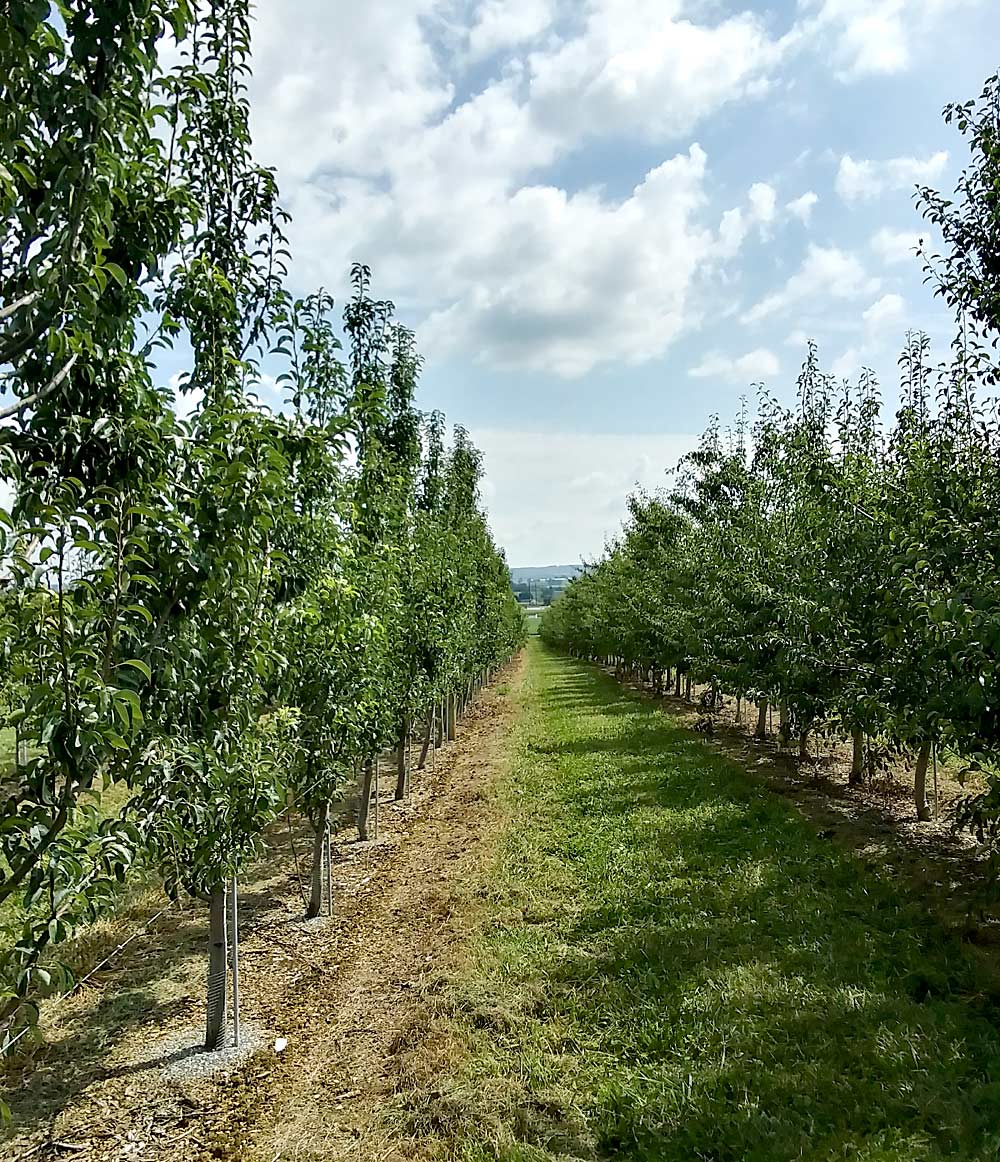
Pennsylvania growers looking to expand fresh-market fruit sales are taking another look at pears. Many of them have grown Bartletts, Anjous and Boscs for decades, but those varieties’ problems with fire blight and pear psylla have kept acreage low.
To manage the fire blight problem, and to keep up with growing demand for pears, some Pennsylvania growers are experimenting with newer, more resistant varieties on size-controlling rootstocks. The resistant varieties include Harrow Delight, Harrow Sweet, Gem, Blake’s Pride, Magness and Shenandoah, said Donald Seifrit, a Penn State Extension educator.
Seifrit organized orchard tours in Southeast Pennsylvania last year for growers curious about the ins and outs of growing modern, higher-density pear plantings. There’s been particular interest from Pennsylvania’s community of Plain growers (which includes Anabaptists and Quakers), who grow significant acreages of pears for canning — a category that’s not as profitable as it used to be, he said.
The modern pear trees are still relatively young, so it’s probably too soon to fully judge how they’ll perform in Pennsylvania. According to interviews with the Good Fruit Grower, grower experiences have been mixed.
What growers say
The old Bartlett block at Kauffman’s Fruit Farm in Bird-in-Hand looks like a lot of old Bartlett blocks: full of dead trees and fire blight damage. Orchard manager Clair Kauffman hopes to retire it soon.
“My father says he won’t plant another Bartlett tree in his life,” Kauffman said. “It’s a wonderful pear all around, but it’s had significant problems with fire blight over the last two decades.”

Bartlett’s challenges made Kauffman and his father, Ken, consider giving up on pears entirely, as many Pennsylvania growers have done, but when they saw how the newer varieties performed in Penn State trials, they decided planting them might be worth the risk. A few years ago, they planted 2.5 acres of Harrow Crisp, Harrow Sweet, Harrow Delight, Potomac, Blake’s Pride, Seckel, Magness, Sunrise and Shenandoah on OHxF 87 and OHxF 97 rootstocks.
The trees are very vigorous, and controlling their height has been a challenge. They reached fourth leaf in 2019, the year they yielded their first significant crop — a nice crop, overall. Kauffman wasn’t expecting a big crop in 2020, due to spring frosts. But he’s seen enough to convince him that Pennsylvania growers can get high-yielding, high-quality pears from these new systems — and they won’t have to worry about fire blight nearly as much.
He said the biggest challenge will be reconnecting consumers with pears.
“Marketing pears has always been a challenge because of the way the pear ripens,” Kauffman said. “Just because you buy it today doesn’t mean it’s ready to eat today.”
With proper education, he thinks consumers will start eating pears again.
“I love them,” he said. “It’s a delicious fruit.”

Bruce Hollabaugh, one of the owners of Hollabaugh Bros. in Biglerville, said consumer education is key to boosting pear consumption. The Hollabaughs teach their farm market employees how and when to eat different pear varieties, and they in turn teach their customers. They also offer pear samples at the market, which have generated more interest in the fruit.
The Hollabaughs have been growing pears for all 65 years of the farm’s existence and now grow between 20 and 25 acres, with the two best-selling varieties being Harrow Sweet and Bartlett. They’ve expanded their acreage in the past few years, planting higher-density trees that are more resistant to fire blight.
The main limitation, however, has always been pear psylla. The pest has multiple generations per year, is difficult to kill and can “explode in a hurry and turn a beautiful crop ugly in a short time,” Hollabaugh said. “Pear psylla is the most tenacious pest we have to deal with. Even if you don’t get a crop, you still have to control for psylla. A lot of growers don’t want to do that.”
The newer varieties and rootstocks weren’t bred for resistance to psylla shock, Seifrit said, but such resistance is a current breeding objective.
At Frecon Farms in Boyertown, general manager Steve Frecon planted about an acre of new, higher-density pear trees on seven-wire trellis in 2016. Sunrise, Harrow Sweet, Magness and the pollinator Seckel were planted on OHxF 87 and OHxF 97. He planted half an acre of Gem the same year.
But after years of growing the trees to the top wire and training the limbs down, Frecon is not getting the yields he expected. He hoped for his first good crop in 2019, but the trees shed all of their fruit that June. To avoid a repeat in 2020, he removed a nearby patch of woods to bring in more sunlight. He also brought in beehives and Bartlett and Bosc blooms to improve pollination. But the same thing happened. The Gem trees aren’t cropping like he’d hoped, either. Is it a pollination issue? Too many spring frosts? He doesn’t know.
“I’m really perplexed as to why 5-year-old trees are shedding fruit,” Frecon said. “We’ve invested a tremendous amount of time and money. We’ve meticulously managed these trees. To not have a crop yet is extraordinarily frustrating.”
Frecon will try spraying ReTain (aminoethoxyvinylglycine) on the blossoms next spring. Until he starts seeing adequate yields out of the new blocks, he doesn’t plan to plant any more pears.

In the early 2000s, Weaver’s Orchard in Morgantown had a bad five- or six-year run of fire blight. The damage was so significant that they ended up pushing out about three-quarters of their old Bartlett and Bosc trees. At the same time, they only had to push out about a tenth of their Harrow Sweet trees, said production manager Justin Weaver.
The farm’s U-pick and farm market customers were asking for more pears, so they decided to plant more Harrow Sweet and other resistant varieties, including Shenandoah, Sunrise, Blake’s Pride, Gem and, more recently, Cold Snap. They planted 2 acres between 2012 and 2015, mostly on OHxF 87. They planted the trees at 3.9 feet by 13 feet, attached to trellises, he said.
With the exception of Sunrise, the new trees have been fairly productive, so far, and are much more resistant to fire blight than are Bartlett and Bosc. Pear psylla hasn’t been much of a problem in the new trees. That’s probably due to a combination of young trees, using Surround early in the season and better spray coverage, thanks to the smaller canopies, Weaver said. •
—by Matt Milkovich






the few times i had a ripened pear it tasted like a soothing drink of water and oh that wonderful flavor of a FRESH pear.
somehow i i missed how i can get a pear to ripen